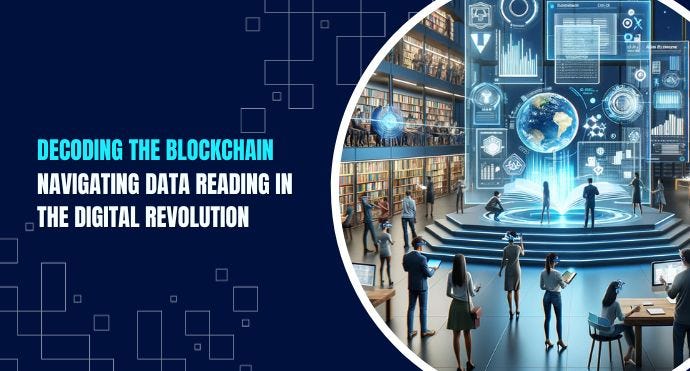Decoding the Blockchain: Navigating Data Reading in the Digital Revolution

Blockchain technology, initially synonymous with cryptocurrencies, has transcended its roots and become a transformative force across various industries. Beyond the decentralized world of digital currencies, blockchain’s core strength lies in its ability to securely store and retrieve data in an immutable, transparent manner. This guide aims to unravel the intricacies of reading data from the blockchain, providing insights into its structure, types, and methods.
Understanding the Blockchain Landscape
Before delving into the intricacies of reading data from the blockchain, it’s crucial to grasp the fundamental structure of this revolutionary technology. At its core, a blockchain is a decentralized and distributed digital ledger recording transactions across multiple nodes. Each block, containing a batch of transactions, is linked chronologically, forming an unalterable chain. The decentralized nature ensures no single entity controls the data, with transactions verified through consensus mechanisms.
Identifying Public and Private Blockchains
Blockchain networks fall into two broad categories: public and private. Public blockchains, like Bitcoin and Ethereum, offer transparent access to all transactions, while private blockchains restrict participation, providing a controlled environment for data sharing. Distinguishing between these types is essential, as it dictates the level of access and tools available for reading data.
Defining Blockchain Data
Blockchain data encompasses on-chain information or transactional data hosted on the network. It includes details from all entries in the blockchain, accessible to everyone. The immutability of this data, once validated, ensures its resistance to any modification, providing a secure and accurate decentralized ledger. Blockchain data comprises miner fees, wallet addresses, smart contract codes, and transaction quantities, aiding developers in assessing if a specific blockchain meets their requirements.
Storage of Blockchain Data
Data on a blockchain is distributed across all network nodes. Each node maintains a copy of the distributed ledger, updated with every transaction. Blocks, linked through cryptography, record transaction data. Blocks consist of a block header storing metadata (timestamp, block number) and block content containing the transaction data.
Methods for Reading Blockchain Data
Block Explorers: Web-based tools like Etherscan for Ethereum and Blockchain.info for Bitcoin provide user-friendly interfaces to navigate blockchain transaction histories. Users can search for specific addresses, transactions, or blocks, retrieving relevant data.
APIs (Application Programming Interfaces): Blockchain networks offer APIs enabling developers to programmatically access data. This allows for customized and automated data retrieval by sending requests to the blockchain’s API endpoints.
Full Node Operation: Operating a full node involves maintaining a complete blockchain copy. Although resource-intensive, it provides the highest autonomy, allowing users to directly query the blockchain’s data without relying on third-party services.
Challenges and Considerations
Data Size and Scalability: Growing blockchain data poses challenges in storage and retrieval speed, driving the development of scalability solutions.
Data Privacy: Public blockchains offer transparency, conflicting with privacy requirements. Private blockchains are preferred for sensitive data, but balancing privacy and transparency remains a challenge.
Interoperability: Different blockchains use distinct protocols, making cross-chain data retrieval complex. Solutions like oracles and cross-chain bridges are emerging for interoperability.
Data Authentication: Verifying the authenticity of blockchain data is crucial, ensured through hashing, digital signatures, and cryptographic proofs.
Conclusion
Reading data from the blockchain unveils possibilities across industries. Whether through block explorers, APIs, or full node operation, understanding these methods is essential. Blockchain’s decentralized, transparent, and secure nature reshapes data storage and access. As blockchain evolves, mastering the art of reading its data remains a valuable skill in the digital landscape, offering a glimpse into the limitless potential of this revolutionary technology.

Comments
Post a Comment